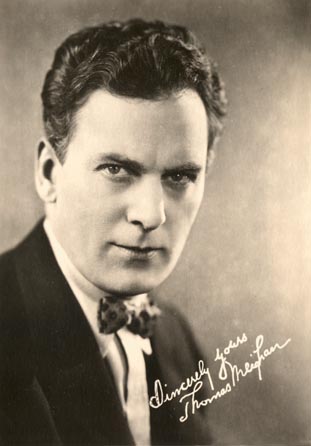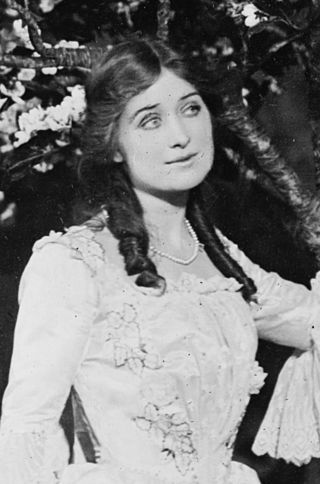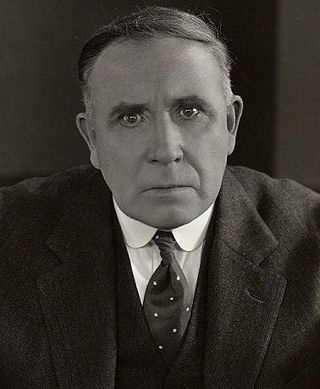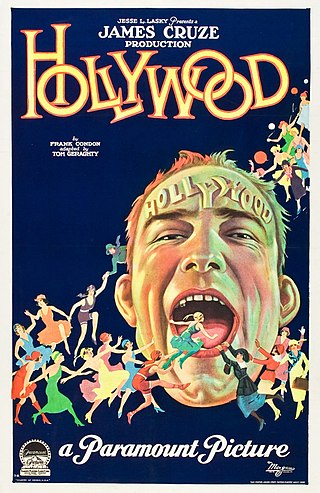
Cecil Blount DeMille was an American film director, producer and actor. Between 1914 and 1958, he made 70 features, both silent and sound films. He is acknowledged as a founding father of the American cinema and the most commercially successful producer-director in film history. His films were distinguished by their epic scale and by his cinematic showmanship. His silent films included social dramas, comedies, Westerns, farces, morality plays, and historical pageants. He was an active Freemason and member of Prince of Orange Lodge #16 in New York City.

Gladys Marie Smith, known professionally as Mary Pickford, was a Canadian-American stage and screen actress and producer with a career that spanned five decades. A pioneer in the US film industry, she co-founded Pickford–Fairbanks Studios and United Artists, and was one of the 36 founders of the Academy of Motion Picture Arts and Sciences. Pickford is considered to be one of the most recognisable women in history.
1917 in film was a particularly fruitful year for the art form, and is often cited as one of the years in the decade which contributed to the medium the most, along with 1913. Secondarily the year saw a limited global embrace of narrative film-making and featured innovative techniques such as continuity cutting. Primarily, the year is an American landmark, as 1917 is the first year where the narrative and visual style is typified as "Classical Hollywood".

Owen Moore was an Irish-born American actor, appearing in more than 279 movies spanning from 1908 to 1937.

David Belasco was an American theatrical producer, impresario, director, and playwright. He was the first writer to adapt the short story Madame Butterfly for the stage. He launched the theatrical career of many actors, including James O'Neill, Mary Pickford, Lenore Ulric, and Barbara Stanwyck. Belasco pioneered many innovative new forms of stage lighting and special effects in order to create realism and naturalism.

Jesse Louis Lasky was an American pioneer motion picture producer who was a key founder of what was to become Paramount Pictures, and father of screenwriter Jesse L. Lasky Jr.

William Churchill deMille, also spelled de Mille or De Mille, was an American screenwriter and film director from the silent film era through the early 1930s. He was also a noted playwright prior to moving into film. Once he was established in film he specialized in adapting Broadway plays into silent films.

Thomas Meighan was an American actor of silent films and early talkies. He played several leading-man roles opposite popular actresses of the day, including Mary Pickford and Gloria Swanson. At one point he commanded $10,000 per week.

Charlotte Ganahl Walker was a Broadway theater actress.

The Warrens of Virginia is a 1915 American drama film directed by Cecil B. DeMille. Prints of the film survive at the George Eastman House Motion Picture Collection.

DeWitt Clarke Jennings was an American film and stage actor. He appeared in 17 Broadway plays between 1906 and 1920, and in more than 150 films between 1915 and 1937.

The Captive is an American silent-era film released on April 22, 1915. It was released on five reels. The film was written, directed, edited, and produced by Cecil B. DeMille. Jesse L. Lasky was another producer and Jeanie MacPherson worked with DeMille to write the screenplay. The film is based on a play written by Cecil B. DeMille and Jeanie MacPherson. The Captive grossed over $56,000 on a budget of $12,154. Blanche Sweet stars as Sonia Martinovich, alongside House Peters who stars as Mahmud Hassan. The film details the romantic war-era plight of Sonia and her lover Mahmud.

The Little American is a 1917 American silent romantic war drama film directed by Cecil B. DeMille. The film stars Mary Pickford as an American woman who is in love with both a German soldier and a French soldier during World War I. A print of the film is housed at the UCLA Film and Television Archive and has been released on DVD.

Charles Waldron was an American stage and film actor, sometimes credited as Charles Waldron Sr., Chas. Waldron Sr., Charles D. Waldron or Mr. Waldron.

Wilfred Buckland was an American art director. Buckland worked as an art director with Cecil B. DeMille and Jesse Lasky, and later with Alan Dwan, from 1914 to 1927. He was Hollywood's first "art director" and is credited with a number of advancements in filmmaking, including the advances in lighting techniques, the development of architectural sets, and the use of miniature sets. In 1924, he was named one of the ten individuals who had contributed the most to the advancement of the motion picture industry since the time of its inception. A 1980 exhibition at the Victoria and Albert Museum in London advanced the argument that "everything we know as 'Hollywood' traces to Wilfred Buckland." Buckland was among the first inductees in the Art Directors Guild Hall of Fame.

Hollywood is a 1923 American silent comedy film directed by James Cruze, co-written by Frank Condon and Thomas J. Geraghty, and released by Paramount Pictures. The film is a lengthier feature follow-up to Paramount's own short film exposé of itself, A Trip to Paramountown from 1922.
The Warrens of Virginia is a 1924 American silent drama film directed by Elmer Clifton. It was produced and distributed by Fox Film Corporation.
The Warrens of Virginia can refer to:

The Lyceum Theatre was a theatre in New York City located on Fourth Avenue between 23rd and 24th Streets in Manhattan. It was built in 1885 and operated until 1902, when it was torn down to make way for the Metropolitan Life Insurance Company Tower. It was replaced by a new Lyceum Theatre on 45th Street. For most of its existence, the theatre was home to Daniel Frohman's Lyceum Theatre Stock Company, which presented many important plays and actors of the day.

Henry Churchill de Mille was an American businessman and Georgist, and the father of film pioneers Cecil B. de Mille and William C. de Mille, and the paternal grandfather of the dancer and choreographer Agnes de Mille.


















